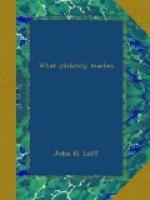The stamps of the first issue of Reunion were sold ungummed and were affixed to letters in any way that pleased the writers. Some were fastened by wafers and some even were pinned on.
Formerly, sheets of stamps to be gummed were fastened in a frame and the gum applied by hand with a large brush. They were then sent to the drying room and hung up to dry. Now the process is entirely mechanical. The sheets are fed into a machine in which they first pass under a gummed roller. Then they are carried on an endless chain through a long box filled with steam pipes and emerge at the further end dry and ready to be pressed and perforated.
The subject of perforations is also worthy of some brief attention. The first stamps were imperforate, necessitating the use of scissors or other instrument in separating them. This was a manifest inconvenience. In 1847, Henry Archer, an Irishman, began experimenting with machines for perforating stamps. After a number of attempts he succeeded in making a machine which was accepted by the English government and for which, in 1852, he was allowed a compensation of L4,000. James M. Napier greatly improved on this machine and adapted it for steam power.
The general principle of all perforating machines is a series of hollow needles, which remove rows of small disks of the paper from between the stamps, and thus fit them to be readily torn apart. For convenience of reference and description philatelists have adopted, as a standard of measurement, the space of two centimetres. The gauge of a perforation is determined by the number of holes in this distance. Scales have been prepared for measuring perforations but it would be superfluous to attempt to describe them here. One of the largest perforations that has been used for stamps has seven holes in two centimetres. This was used on the stamps of France by Susse Freres, a firm of stationers. It was done for the convenience of themselves and their customers. Some of the stamps of Mexico have a still larger perforation gauging 51/2. The finest gauge is about 19. This is an unofficial perforation and was applied to some of the early stamps of Tasmania.
[Illustration: Perforation]
[Illustration: Perforation]
[Illustration: Perforation]
[Illustration: Perforation]
We show you here a variety of perforations. The first two are ordinary perforations of different gauges, 91/2 and 14. The third shows a perforation in square holes instead of round. The next is an example of pin perforation, the holes being far apart and small. Two sides of the stamp show the holes before the stamps have been torn apart and a third side shows the ragged effect produced by separating them. Another form of pin perforation is made by needles which are not hollow and merely prick holes in the paper without removing any of it. This sort of perforation has sometimes been made by a sewing machine with an unthreaded needle.




